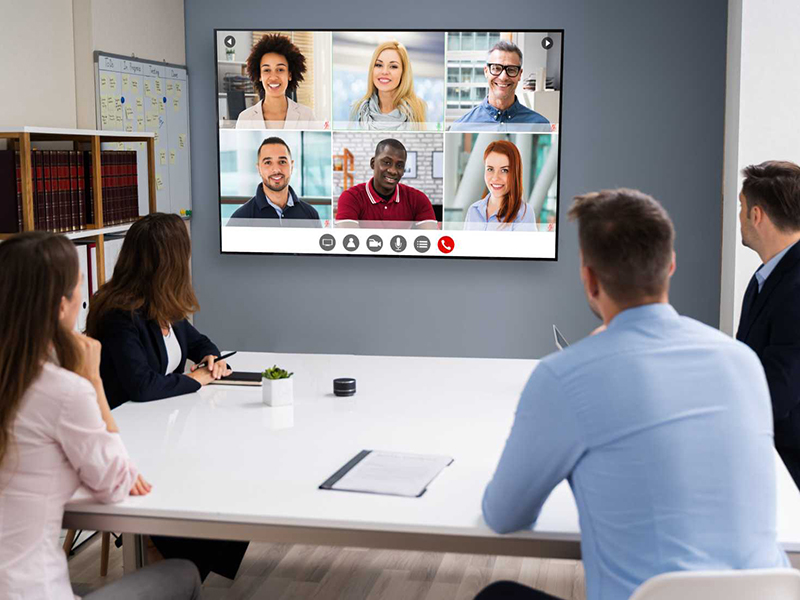A wave of hybrid workforces are going to emerge as the norm for organizations across America, according to a series of recent studies.
The Prudential’s Pulse of the American Worker survey found more than two-thirds (68%) of U.S. workers would prefer a hybrid workplace model after the pandemic ends. And nearly 80% of C-suite executives polled by WeWork and Workplace Intelligence, said plans are in the works for a hybrid model, meaning a mix of in-office and remote teams will become a permanent fixture of post-pandemic workforces.
With data demonstrating hybrid is the way of the future, we are pleased to help you build a robust and productive hybrid model with some practical tips and factors to think about.
1. Re-design your workspaces
Office suites should not look and function exactly as they did before virtual work became commonplace. Why? Because after more than a year of no commuting, not needing to dress up and all the creature comforts of a cozy home, the new office is going to require enticing elements to ensure workers return with a smile.
Our advice is to make office spaces genuinely fun, friendly and collaborative. Redesign or reinvent the office such that it is purpose-built to engender mentoring, idea-sharing, coaching, community and connecting. That may involve creating comfy conference rooms or collegial lounges where people bond and brainstorm. We know the aforementioned activities have been more challenging to engage in while working remotely, so let’s bring employees back to something they look forward to.
2. Assess your talent search practices
As executive search consultants, TRANSEARCH experienced first-hand the rapid transformation of the entire search process going virtual, from interviewing right through to onboarding. According to a McKinsey study, nearly two-thirds of organizations switched various recruiting activities to remote during Covid. Now in this hybrid context, you should assess how well those practices are working. For example, does it still make sense to do virtual onboarding for certain employees? Are there cases where in-person interviews would be better than remote? You may find that remote interviews are efficient, effective and therefore, it makes sense to stick with this approach. What’s key is that you spend quality time evaluating your talent search practices and determine what will work best.
3. Prioritize flexibility
People have experienced unprecedented flexibility during this remote work revolution. For example, they’ve been given significant latitude by their employers to balance caregiving and parenting responsibilities alongside work. Collaborative videoconferencing technology has not only empowered people to work where they want, but to a fair degree, when and how they want. Moreover, technology has made lifestyle tasks, like grocery delivery and dinner orders, super fast and easy.
As workers return, they are going to want to keep as much flexibility as they can and there are tangible things organizations can do to make that happen. For instance, when on-site teams need to book a room, aim to arm them with the tech to do so as easily as a tap or two on their phone. When it comes to scheduling, companies need to remember that many employees have spent a year where their work time rarely stuck to traditional 9-5 parameters. Therefore, be open to flex hours. And be open to offering choices with regards to which days are in-office and which ones are remote. Making the extra effort to be flexible will keep employees engaged and motivated and as a result, translate into productivity.
Workers and businesses alike adapted and evolved with resilience in the sudden switch to en masse virtual work. Now, we must show the same agility as we map out a smart and adaptable way forward for successful hybrid organizations.
Chris Swan
Chris is a Managing Director with TRANSEARCH International, co-founder of the Chicago office, and Global Practice Leader for Design, Construction, Technology and Environmental. He is one of the top executive search professionals in the area of general contracting, environmental consulting, systems integration, cyber-security, digitisation, and new technologies. Firms value Chris’ advice because of his understanding of the markets and what it takes to succeed in business. He attracts candidates when others cannot.
John Ryan
John is Global Practice Leader for Power, Renewable Energy and Cleantech and US Regional Vice President for TRANSEARCH International. With a career that began in 1989, John has worked with over 250 public and private companies. He has led numerous C-suite, Vice President and director level searches across North America for public and privately held companies. He has also worked closely with private equity firms, supporting them with critical portfolio company needs. He has also provided executive coaching and leadership assessment services. John holds a Bachelor of Arts Degree in Linguistics from the University of Chicago. He speaks Japanese and conversational German.


